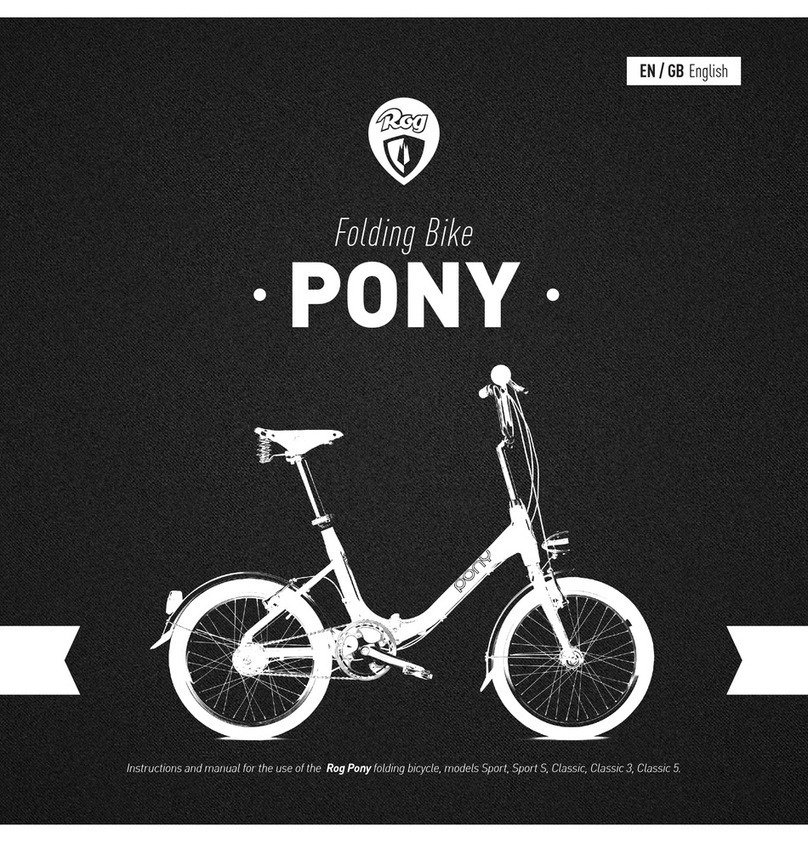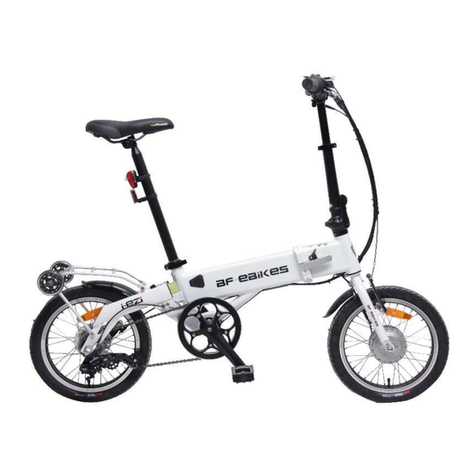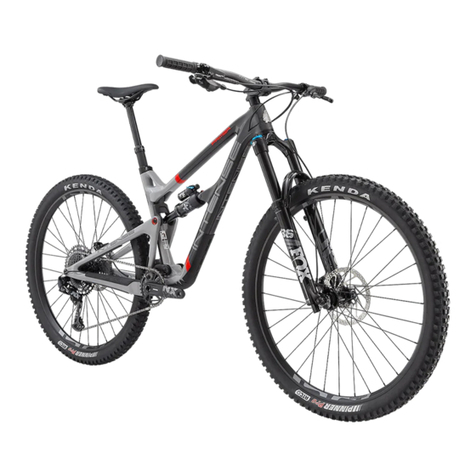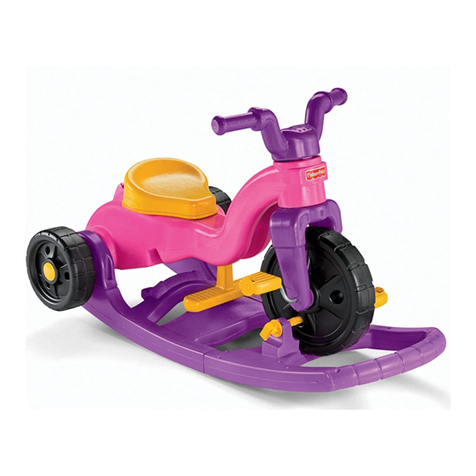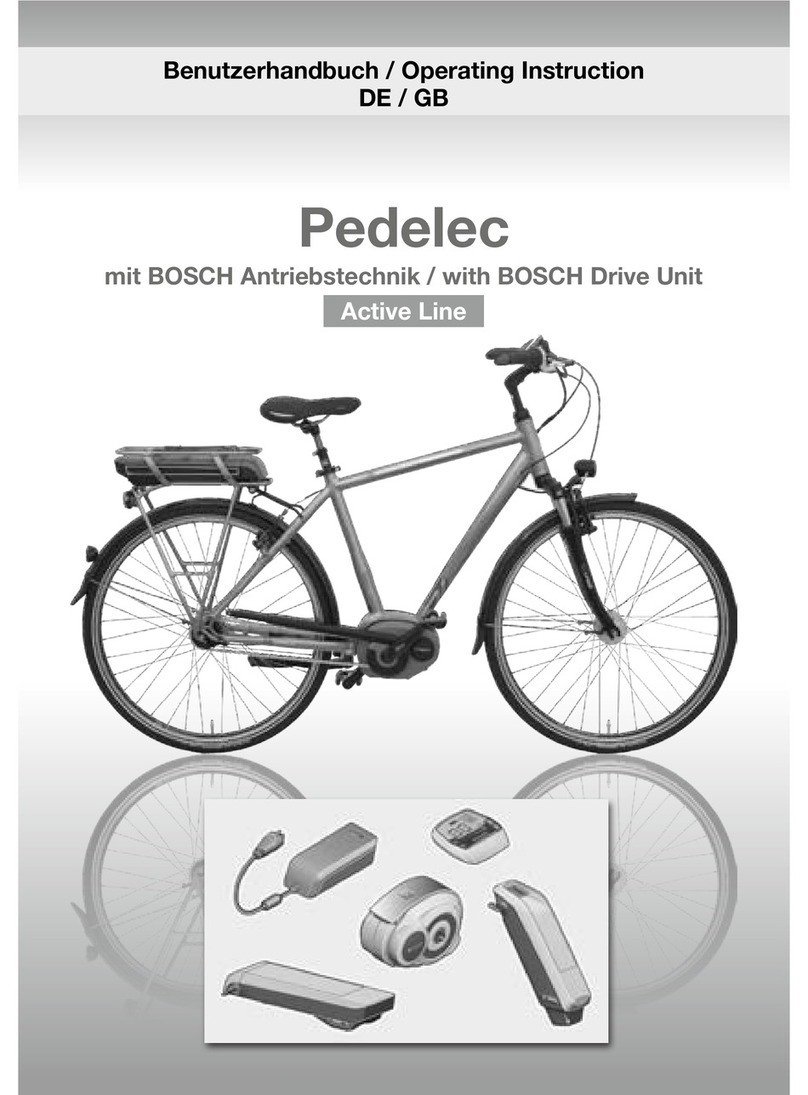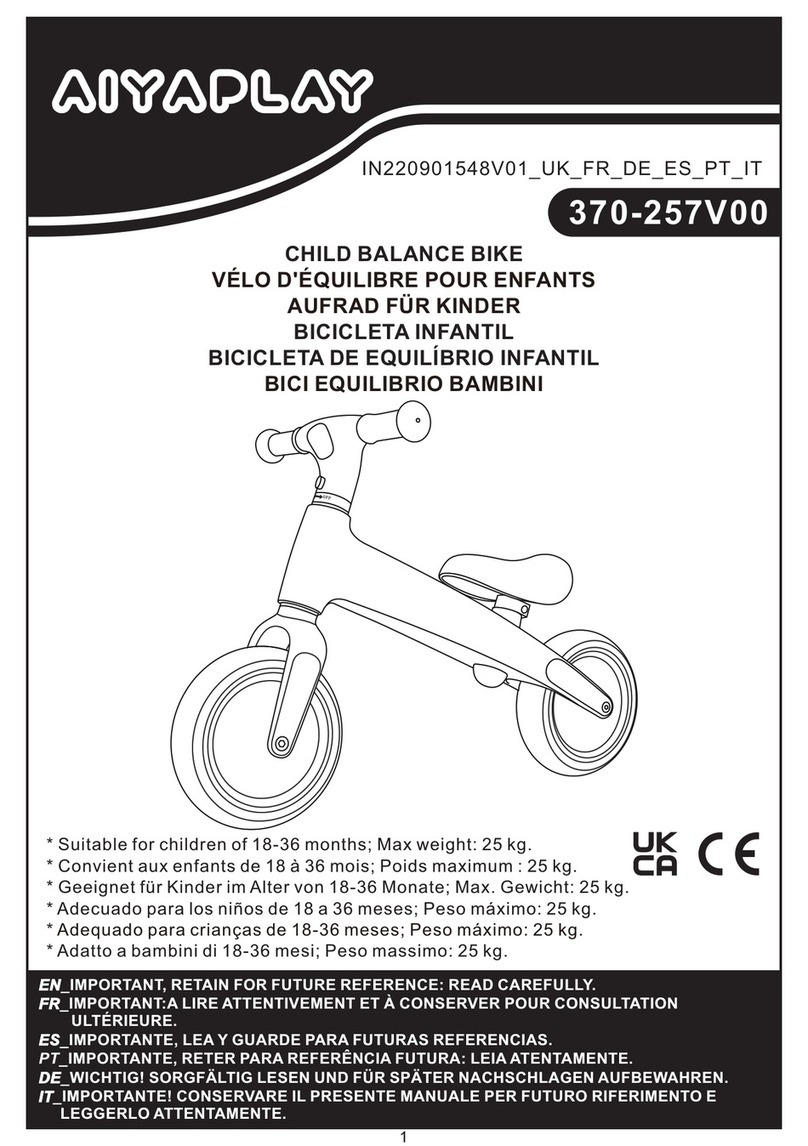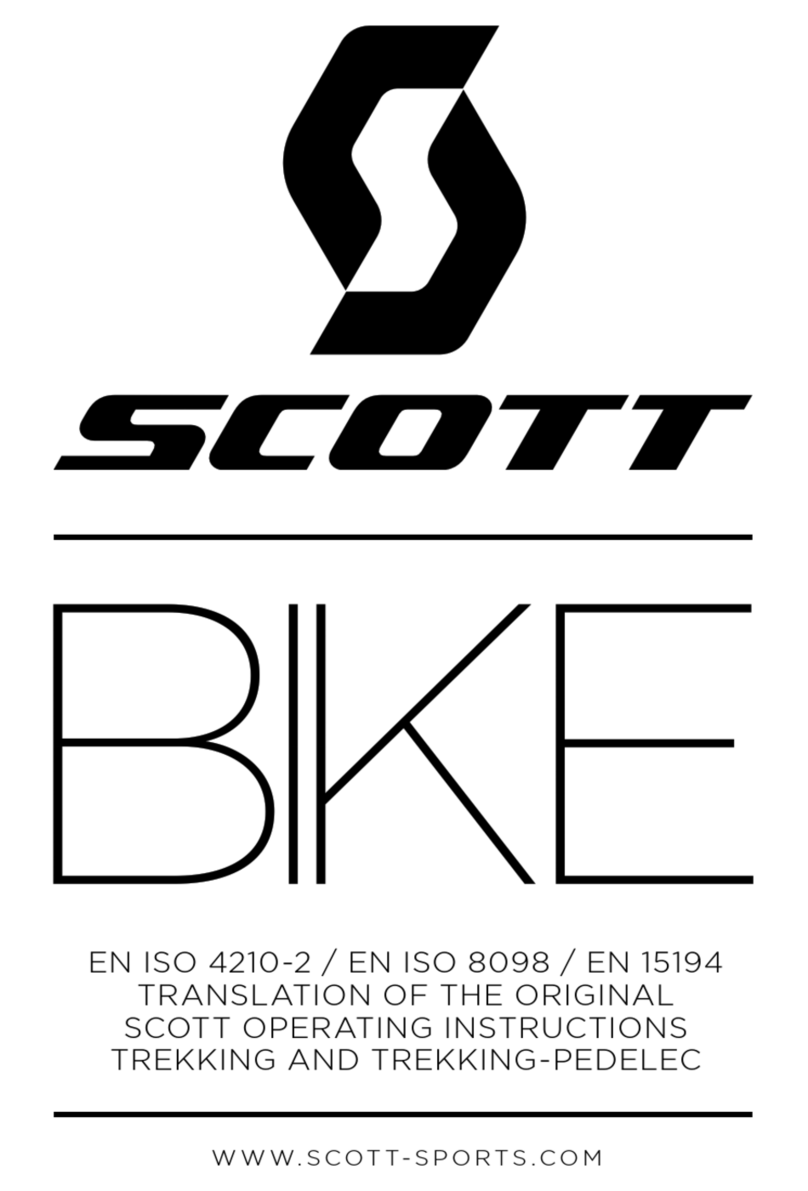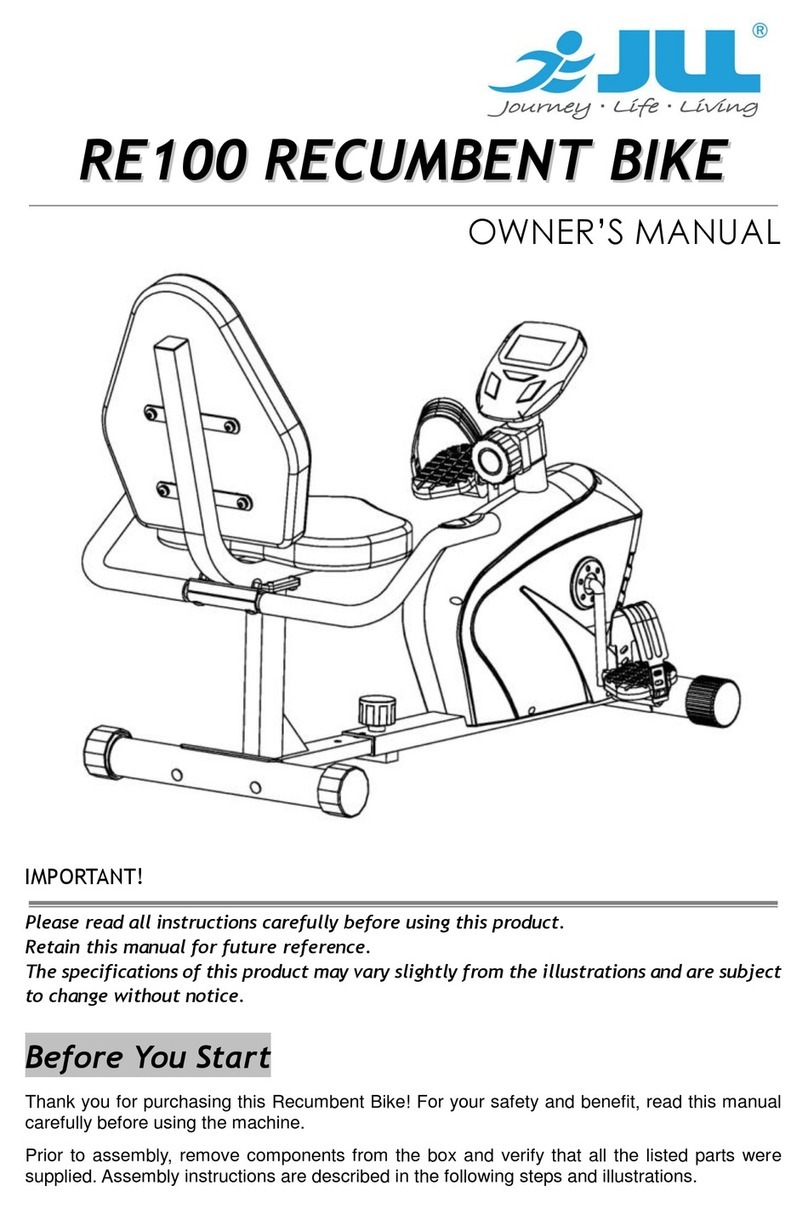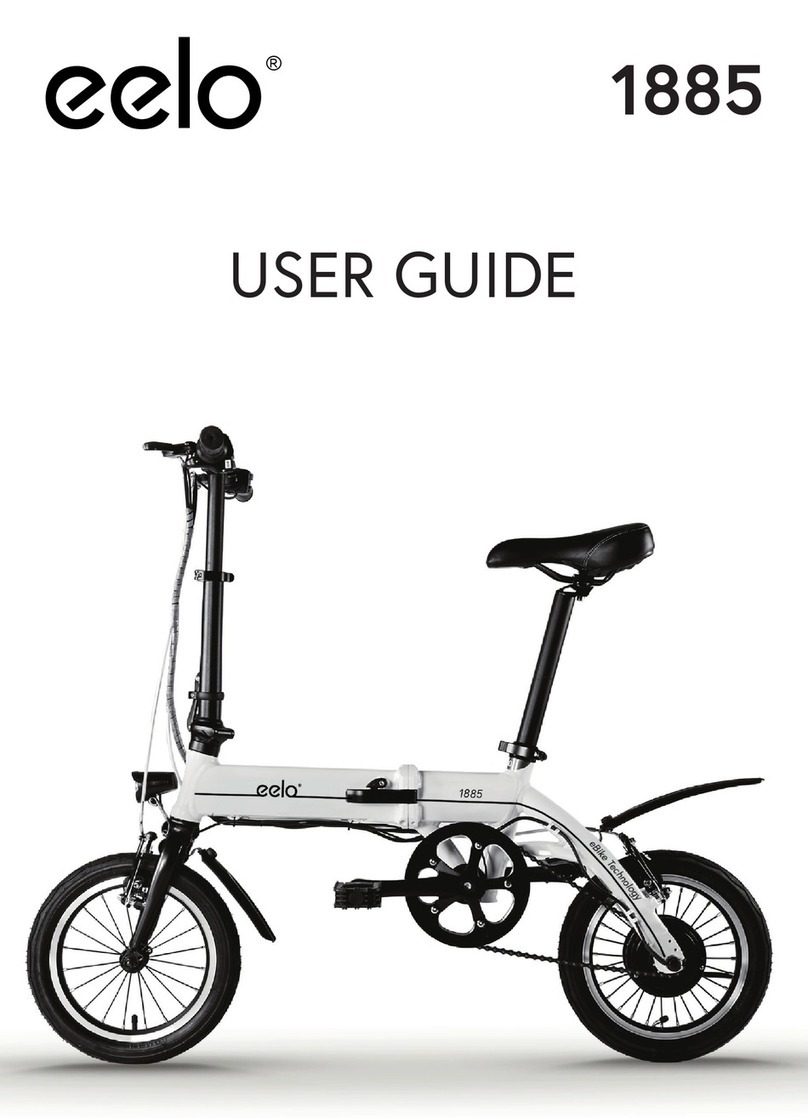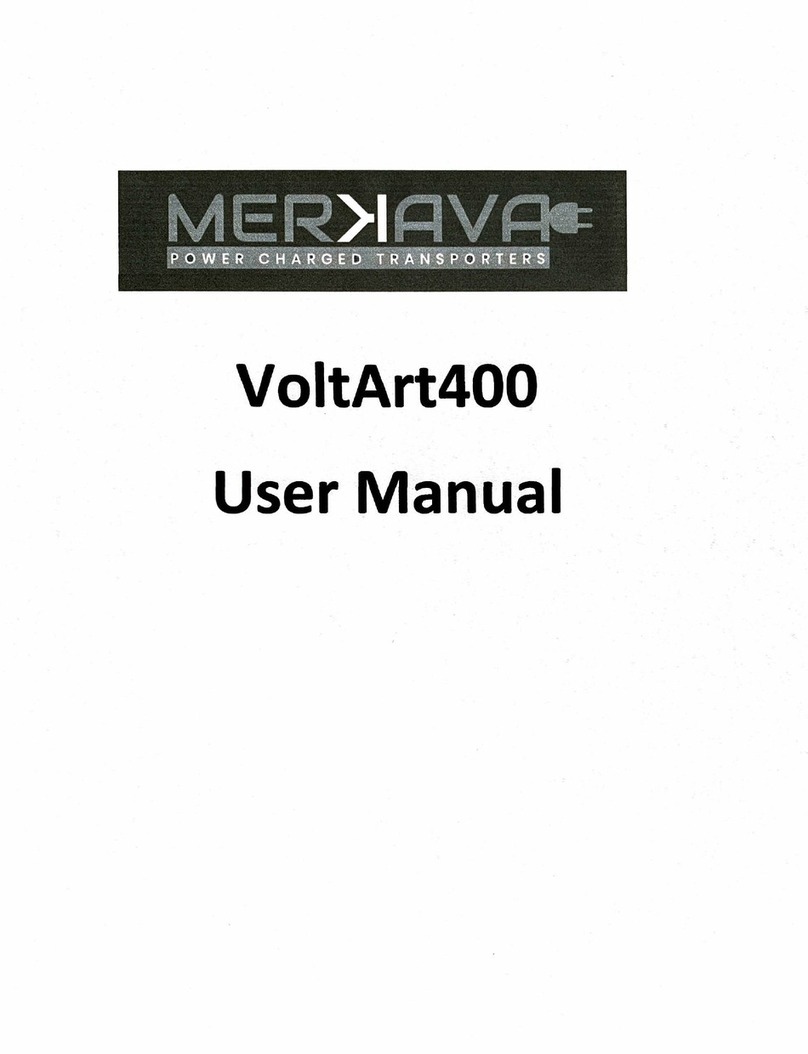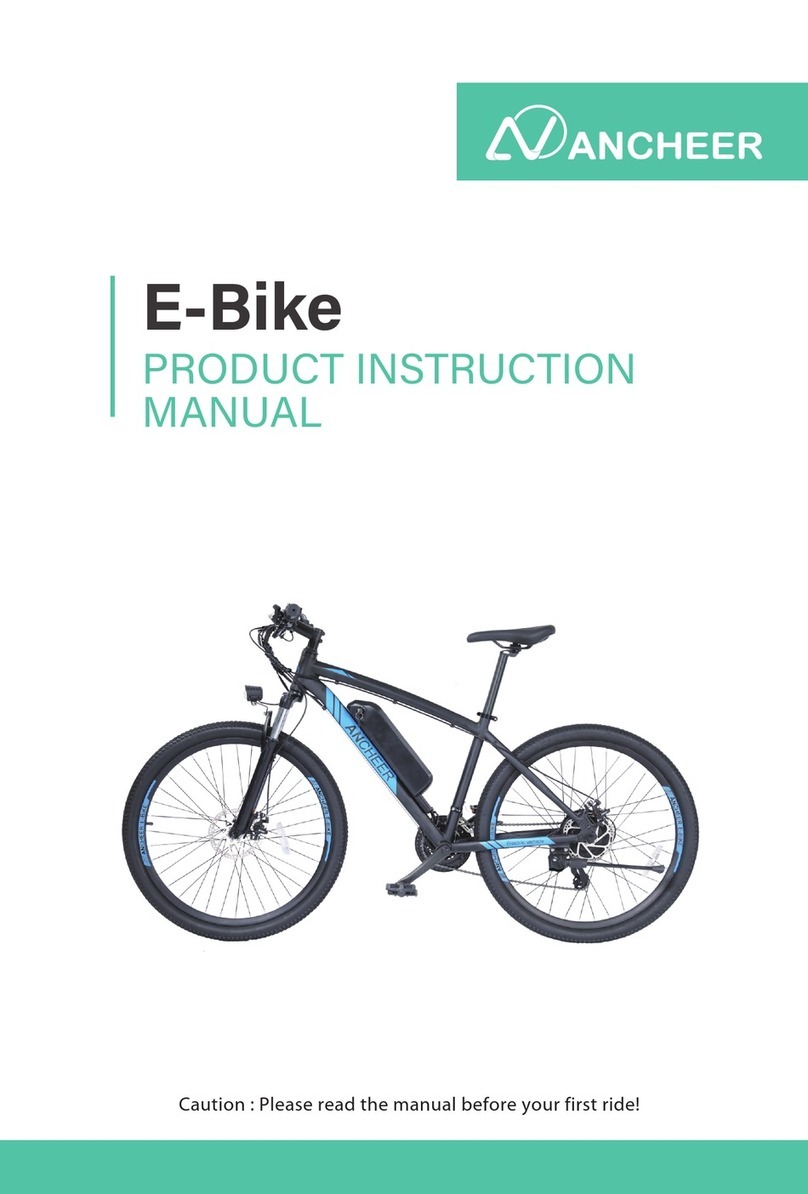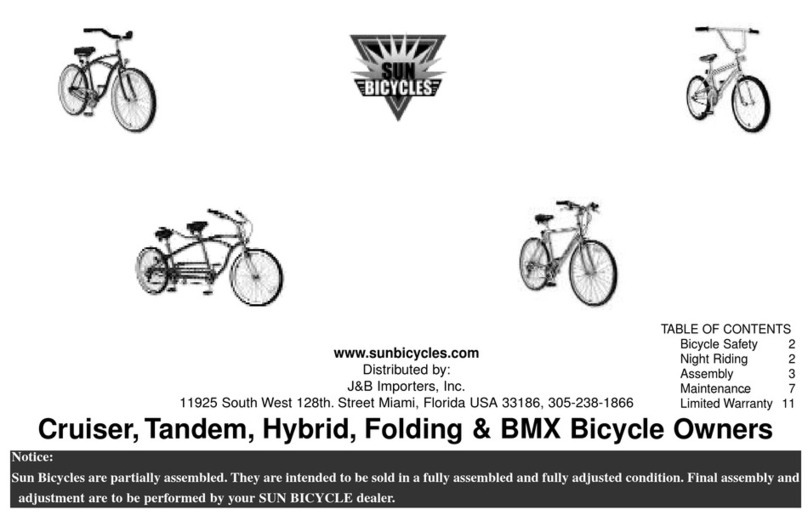CSAWP LEMON User manual

USER
MANUAL
FOR CSAWP BIKES
prepare for your path of exploration
LEMON | BOT | MOT | MOT X | CITY | RISE | STREET

Please retain these instructions for future reference.
Thank you for choosing CSAWP!
These instructions are intended to detail some important points vital for the safe and effcient
running of your bike and to run through the adjustment of the bike to accommodate your
child’s development.
Your CSAWP has been part assembled for your convenience. These instructions are intended
to guide an adult through the final assembly and adjustment of the bike to fit your child. It also
details some important points vital for the safe and efficient running of your bike and to run
through the adjustment of the bike to accommodate your child’s development.

SAFETY FIRST
Avoid riding by any busy streets or highways and always observe possible national legal requirements if riding on public roads.
PLEASE RIDE WITH CARE
No matter how experienced your child is, it’s worth spending some time allowing your child to get used to riding their new bike
in a quiet, open area, free from traffic.The bike is built for speed and awesomeness.
Ensure that your child is properly protected at all times and above all...
ALWAYS WEAR A HELMET!
RIDING IN THE DARK
Your CSAWP Bike comes with a full set of reflectors. Keep them on the bike and keep them clean; they will help your child to be
seen by others. If you and your child will be riding in dull or dark conditions we strongly recommend that you use a set of reliable
battery powered lights. We also strongly recommend your child wears reflective clothing when riding, but especially in low light
conditions.
BAD WEATHER
Always be aware that brakes do not work as efficiently in wet weather as they do in the dry. Even well maintained brakes will
require more pressure on the lever and a longer distance to stop. Make sure to remind your child to familiarise themselves with
braking when they ride in variable conditions. Also remember that visibility is reduced in the wet.

Your best ’friend‘ needs some simple care
REGULAR CHECKS
• Periodically check wheels and tyres for damage.
• Ensure that tyre pressures are at the recommended psi level on the side of the tyre.
• Regularly check and tighten all bolts.
• If broken in any way discontinue use immediately and refer to your authorised CSAWP retailer.

Directory
PATR 1
PATR 2
BALANCE BIKES
HARDTAIL BIKES

Setting Your CSAWP
Know Your CSAWP Balance Bike
N.B. The rear wheel comes pre-attached to the frame.

Setting Your CSAWP
The handlebars can be adjusted to suit the rider. The height can be altered to
find the most comfortable riding position for your child.
Your CSAWP has a “threadless” headset system which
uses a series of spacers that can be placed above or below the stem to alter
the handlebar height.
Using the allen key provided, remove the hex head bolts securing the front
plate of the stem.
Place the handlebar on the front of the stem and reattach the front plate to
secure.
Be sure that the stem clamps the centre of the handlebar length and that you
don’t over-tighten the hex bolts.
FIT THE HANDLEBAR
Do not over-tighten the stem bolts, you could strip the thread from the stem or the bolt.

Loosen the hex head bolt on the seat post clamp, with the supplied allen key,
to allow height adjustment of the saddle.
Adjust the height so that your child’s feet rest comfortably on the ground, flat
and with a slight bend in the knee.
NOTE: Do not adjust the saddle height beyond the marked safety line
on the seatpost.
Setting Your CSAWP
ADJUST THE SEA

Grab the front wheel , 2 x hex head bolts and the 2 x metal washers.
Slide a large washer over each of the hex head bolts and loosely th read
them into the wheel axle.
Then place the wheel axle into the fork drop outs with the washers between
the fork drop out and the bolt head.
Tighten the bolts with the supplied allen key. Ensure that the wheel is
straight and that it spins freely
FIT THE FRONT WHEEL

Basic maintenance
CLEANING
Weather conditions are generally the biggest factor that de-
termine the frequency of cleaning and lubrication.Cleaning
your bike regularly means you are more likely to notice any
loose or worn components and possible frame damage.
A clean, well lubricated bike will also run more smoothly and
look great. We recommend using a bicycle cleaner, a sponge
and a brush. Wash, rinse and dry before lubricating it.
DO NOT JET WASH as this may damage your bike’s cartridge
bearings.
After cleaning your bike, it is advisable to spray with a water
dispersant, let it dry and then lubricate moving parts. The
drivetrain and gear cables will benefit from regular lubrication
with a suitable bicycle specific lubricant.
LUBRICANTS
After cleaning your bike, it is advisable to spray with a water
dispersant, let it dry and then lubricate moving parts.
The drivetrain and gear cables will benefit from regular lubri-
cation with a suitable bicycle specific lubricant.
It is recommended to clean the chain and add chain oil after
each ride. (According to the actual riding environment and
frequency)
Although the bike uses corrosion resistant hardware a small
squirt of a water dispersant on all bolt heads will help stop
corrosion and keep the bolts looking like new.
Your best ’friend‘ needs some simple care

MAINTENANCE SCHEDULE
It is advisable to have your bike serviced regularly to keep it in good working order. If you consistently ride more or in poor wether
conditi ons, then you should check the bike more frequently.
Frame & Forks Check for damage, discolouring, dents or cracks before everyride Tyres Check pressure, tread and sidewalls for
damage before every ride Brakes Check function before.
Every ride Bolts & Hardware Check bolts are tight weekly spray with water dispersant after washing/rain Brake Pads Check wear of
brake pads weekly Bottom Bracket Check for play/damage monthly.
Crank Bolt Check Crank bolts are tight on a weekly basis.Drivetrain Keep lubricated weekly, check for wear and replace if neccesary
Wheels Check for trueness and spoke tension weekly, check for bearing play.

Basic maintenance
THREADLESS HEADSET
Your CSAWP bike uses a ‘threadless headset’.
Threadless headsets use a stem that clamps around an un-
threaded steerer tube of a fork. Adjustment of these headsets
(or retensioning after repositioning of spacers to adjust the
stem height) is relatively straight forward threadless headsets
can be adjusted with a simple allen key.
If the headset is loose, first loosen the stem bolts so that it
can move on the steerer. Tighten the bolt in the centre of the
top cap that sits on top of the stem until the play is taken up.
Do not over tighten this top bolt.
Rock the bike back and forth with the front brake on to check
for play and tighten a quarter turn until the play is eliminated.
Then tighten the stem bolts correctly ensuring that the stem
is lined up with the front wheel.
Correct tensioning of these bolts involves adding a half turn
to each bolt in turn until the correct level of torque is
reached.
Rotate the bars from side to side – the headset should feel
smooth, not lumpy or stiff. If it is, undo the stem bolts and
loosen the top cap bolt a quarter turn and try again.
Bearing damage caused by lack of maintenance or by
riding the bike with a loose headset may mean that a
smooth feel is not possible in this case please consult your
local dealer for advice.
HEADSET & STEM

A loose headset can cause a serious accident, ensure that any play here is
eliminated before the bike is ridden. Consult a dealer if in doubt.
Although the bearings of a headset don’t rotate as frequently as the other
bearings on a bike they are among the most important as they control the
accurate steering of your bike.
A loose headset can quickly damage the bike making it hard to control. Check
your headset every time you ride. To check headset tightness, put the front
brake on and rock the bike back and forth. If you feel movement tighten the
headset.
HEADSET & STEM

Congratulations! Your CSAWP is already assembled.
However, there is still information about daily maintenance and warranty related information below.

N.B. The rear wheel comes pre-attached to the frame.
Setting Your CSAWP
Know Your CSAWP Hardtail Bike
HARDTAIL BIKES

Setting Your CSAWP
Sit your child on the bike. Adjust the saddle position so that your child can
support themselves with their feet on the ground and their legs slightly bent.
They need to be comfortable and stable when they are getting started on
the bike.
Once familiar with the bike, you can begin to raise the saddle height to
enable a little extra pedal power, but be sure to do this only as your child’s
confidence develops.
Encourage your child to pedal with the ball of their foot.
In time you can get them to a riding position where the leg is slightly bent at
the bottom of the pedal stroke for optimum efficiency.
ADJUST THE SEATING POSITION
SEAT CLAMP
Your seat post is marked to indicate the maximum permissible height of the saddle.
For safety reasons, do not exceed the maximum extension mark.

The seat is equipped with anatomically correct
performance seat specially designed for children. It uses rails together with a
micro-adjust seatpost to give you precise control over reach and angle.
We recommend you work with your child to find the perfect position. To
adjust simply loosen the allen key bolts under the seat at the top of the seat
post (see pic).
Once loose you will be able to move the seat backward and forwards and
angle it up and down.
Once the desired position has been found just tighten the bolt and you’re
ready to ride!
SEAT RAILS
CHECK YOUR SEAT RAILS

Setting Your CSAWP
The handlebars can be adjusted to suit the rider. The height can be altered
to find the most comfortable riding position for your child.
Your CSAWP has a “threadless” headset system which
uses a series of spacers that can be placed above or below the stem to alter
the handlebar height.
ADJUST THE HANDLEBARS
STEM HEIGHT

CHECK YOUR WHEELS & TYRES
TYRES / WHEELS
TYRES
Check your tyre pressure before riding, either by hand or by using a pres-
sure gauge. Your tyres should be inflated to the pressure range indicated
on the tyre sidewalls. Under inflated tyres will increase traction but will be
harder to drive and will increase the chance of punctures.
WHEELS
Spin the wheels to make sure the rims run true. If the wheels become
untrue, they can easily be repaired by an experienced bike mechanic.
It is possible that a light rubbing can be heard when the wheel turns.
This sound comes from light contact between the disc and the brake pads,
and will disappear after the initial running-in period.
If the wheel does not turn freely or the sound does not disappear howev-
er, it would be best to seek professional help.

Setting Your CSAWP
Shift gears by pushing the triggers with your thumbs. To change to an easier
gear, push the largest trigger with your thumb (the one nearest to you).
To change to a harder gear, push the smaller trigger with your thumb (the
one furthest from you).
When approaching inclines shift down to an easier gear in good time.
The smoothest and fastest gear change happens when changing gears while
pedaling with low force.
GEARS - TRIGGER SHIFTERS
SHIFTERS
Periodically check to make sure your gear hanger isn’t bent.
If it is, contact your CSAWP dealer or customer support.
This manual suits for next models
6
Table of contents
